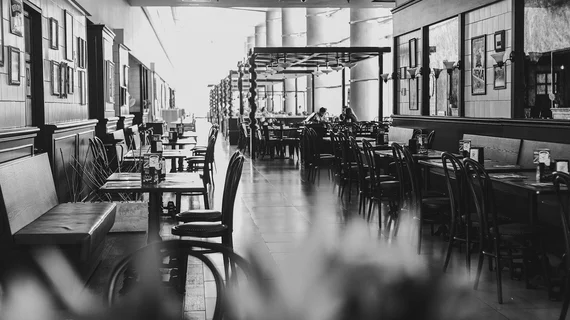Noted radiologist urges specialty's return to days of communal eating during meal breaks
Richard Gunderman, MD, PhD, a noted radiologist and author, issued a call on Monday, urging the specialty to return to communal dining during meal breaks.
In his own early days of practice 25 years ago, lunch was eaten in a large break room, with hospital staffers congregated around a TV discussing their favorite daytime programs. Others gathered in groups of 2-4 to discuss work, life and the day’s news, typically making a point of using their full 30 minutes and doing so together with others.
But today, breaks are staggered to avoid service disruptions. Many employees take 15 minutes or less. Others stare at their smartphones for the duration, while radiologists often work through their mealtimes.
“The break room is now a smaller, quieter, more sterile space,” Gunderman, a professor with the Indiana University School of Medicine, wrote Dec. 7 in Academic Radiology. “To be sure, we still gather to celebrate some holidays and major life events, but the marked decline in table fellowship has diminished the sense of community among our diverse group of health professionals.”
He believes the concept of “commensalism” has taken a "beating” in medicine and wants members of the radiology community to instill it in their successors. In simple terms, it means sharing a table, and Gunderman believes it offers great promise for enriching lives. He sees such commensalism as simple means to irrigate the “desert of isolation” and sow the “seeds of fellowship.”
Radiology departments can begin to foster this climate of friendliness through several approaches. Those include ensuring there are venues to break bread together, giving team members adequate time for breaks, and avoiding the stigmatization of workers with a desire to connect. If the workday is already too busy for such considerations, leaders might try hosting meals after hours and reimbursing rads for team-building outings.
“Whatever form it takes, commensalism is as old as humanity, and though we have progressed far in many respects since ancient times, in some respects the old ways remain best,” he concluded.
Read the rest of the piece below.

